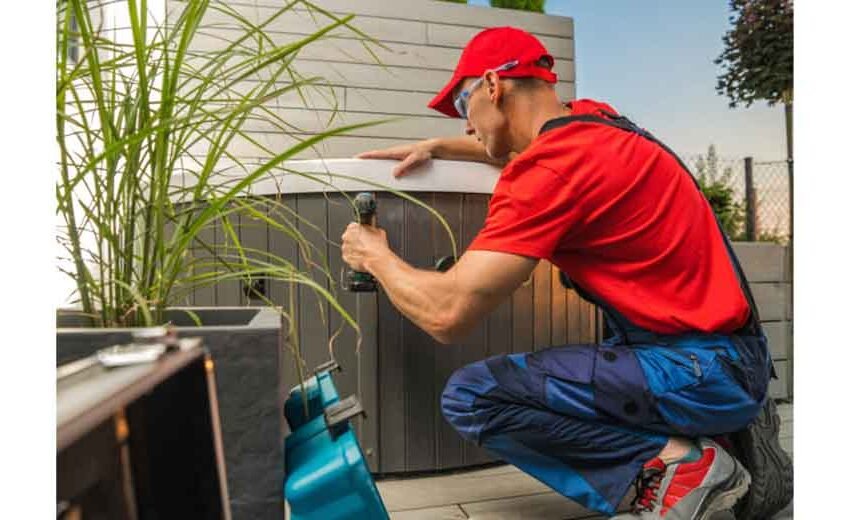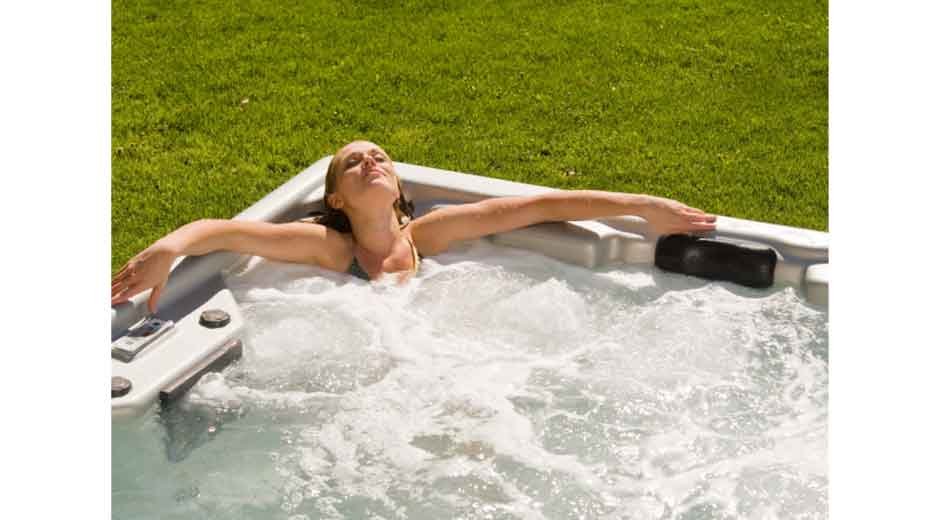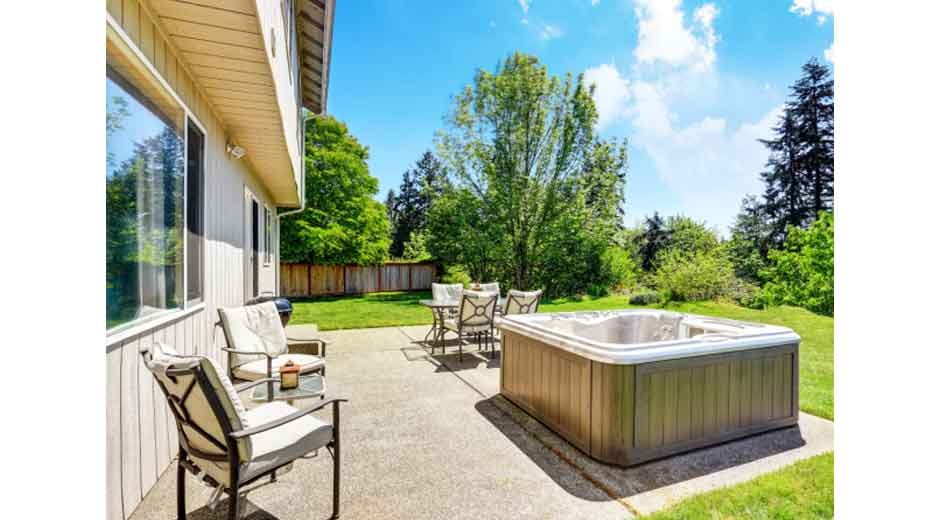What to Know Before Installing a Hot Tub Electrical, Foundation, and Placement Essentials

Installing a hot tub can transform your backyard or patio into a relaxing retreat, but proper planning is crucial. Electrical setup, foundation stability, and placement all affect safety, energy efficiency, and longevity. Whether you’re a first-time owner or upgrading an old model, understanding these essentials helps you avoid costly mistakes and ensures smooth installation across both U.S. and Canadian climates.
1. Site Preparation and Planning
Before ordering or positioning a hot tub, evaluate your space carefully. Hot tubs are heavy, and once filled with water and users, their weight can exceed 4,000 to 5,000 pounds. A poorly chosen or unprepared site can lead to uneven settling, leaks, or electrical issues.
Key planning considerations:
- Accessibility:Choose a location with easy access to your home and maintenance area. You’ll need space for servicing pumps, filters, and plumbing.
- Privacy and Views:Balance privacy from neighbours with an appealing view. Many homeowners use fencing, pergolas, or greenery for screening.
- Drainage:Avoid placing the hot tub in low-lying areas where water collects. Standing water can damage components and encourage mould growth.
- Sun and Wind Exposure:Positioning your hot tub near windbreaks and away from constant sunlight reduces heat loss and UV damage to covers.
Once you’ve identified the best area, sketch a layout including electrical access points, walkway clearance, and storage for accessories. This helps prevent logistical issues on installation day.
2. Electrical Requirements and Safety Standards
Electricity powers your hot tub’s heating, jets, lights, and filtration system, making safe wiring essential. Installation must comply with the National Electrical Code (NEC) in the U.S. or the Canadian Electrical Code (CEC) in Canada.
Electrical essentials:
- Dedicated Circuit:Most 240-volt hot tubs require a dedicated GFCI-protected circuit rated between 40 and 60 amps. Smaller plug-and-play models often run on 120 volts but still need GFCI protection.
- Distance from Water:Electrical panels and outlets must be placed at least 5 feet away from the water edge, as per safety regulations.
- Professional Installation:Hot tub wiring involves complex grounding and bonding requirements to prevent electrocution risks. Always hire a licensed electrician familiar with local codes.
- Weatherproofing:Use outdoor-rated conduits and waterproof boxes to protect wiring from rain and snow exposure.
If you’re uncertain about your setup or local codes, it’s best to get in touch with a local hot tub installer who can coordinate with an electrician and ensure compliance. Electrical errors are among the most common causes of system failure and should never be treated as a DIY task.
3. Foundation and Structural Support
A hot tub’s foundation determines its long-term stability and performance. An uneven or weak base can cause leaks, stress cracks, and an imbalance in the shell or frame.
Recommended foundation options:
- Concrete Slab:The most durable choice. A 4–6 inch reinforced concrete pad provides a solid, level base and can handle thousands of pounds.
- Decking (Wood or Composite):If placing your hot tub on a deck, ensure it’s structurally reinforced to support the full weight when filled. A structural engineer should evaluate older decks before installation.
- Spa Pads or Modular Bases:Pre-made interlocking plastic or rubber bases offer convenience and good drainage, ideal for portable hot tubs.
- Pavers or Gravel:For budget-friendly setups, compacted gravel or large pavers work, but ensure proper levelling and compaction to prevent shifting.
Load-bearing example:
A 7-person hot tub holding 400 gallons of water, and users can easily exceed 4,500 pounds. A properly designed base distributes this weight evenly, preventing sinking or cracking.
To avoid issues, the surface must be:
- Completely level within ½ inch tolerance.
- Free from debris or soft soil.
- Sized at least 12 inches larger than the tub on all sides.
4. Placement and Environmental Factors
Placement affects both usability and energy efficiency. It also determines how well your hot tub withstands environmental elements through all four seasons.
- Indoor vs. Outdoor Installation:
 Outdoor living hot tubs are most common due to ease of ventilation and drainage. Indoor installations, while possible, require proper waterproof flooring, ventilation fans, and dehumidifiers to prevent moisture buildup.
Outdoor living hot tubs are most common due to ease of ventilation and drainage. Indoor installations, while possible, require proper waterproof flooring, ventilation fans, and dehumidifiers to prevent moisture buildup.
- Proximity to Utilities:
Keep the hot tub close to water sources and electrical outlets, but not so close that moisture can affect them. Many homeowners position their tubs near patios or back doors for convenience in winter. - Shelter and Protection:
- Install windbreaks such as privacy screens, fences, or shrubs.
- Use pergolas, gazebos, or retractable covers to protect from snow, rain, and UV rays.
- In colder climates across northern U.S. states and Canada, insulated covers and thermal wraps are essential for energy efficiency.
- Accessibility for Maintenance:
Leave at least 2–3 feet of clearance around control panels and pumps. This ensures technicians can access components without draining or moving the hot tub.
5. Permits, Regulations, and HOA Guidelines
Many municipalities in the U.S. and Canada require permits for hot tub installations. Local regulations vary by province, state, and city, especially regarding electrical wiring and safety barriers.
Typical requirements:
- Electrical Permits:For new circuit installation or upgrades.
- Building Permits:When constructing a foundation, deck, or enclosure.
- Fencing and Safety Codes:Some areas require locking covers or gated fences for child safety.
Before beginning, check with your local building department and homeowners association (HOA). Non-compliance can result in fines or forced removal. Always retain records of inspections and approvals.
6. Delivery and Installation Logistics
Hot tubs are large and heavy, often requiring special equipment for delivery. Before installation day:
- Measure all access points, including gates and doorways, to ensure clearance.
- Clear the path of obstacles like branches, furniture, or garden décor.
- Verify that delivery trucks can reach your property safely.
Installers typically use dollies or cranes to position the hot tub. Prepare the site in advance to minimize setup time and ensure safety.
7. After-Installation Checks

Once installed, perform these checks before filling your hot tub:
- Inspect all fittings and plumbing connections for tightness.
- Test the GFCI breaker to ensure it trips and resets properly.
- Verify water flow and jets for obstructions once filled.
- Run the heater and monitor temperature rise for consistency.
- Check for leaks around unions, valves, and pumps after the system pressurizes.
Following these steps helps prevent early malfunctions and ensures your hot tub operates safely from day one.
8. Climate Adaptations for the USA and Canada
Cold weather can strain hot tubs if they’re not prepared. In northern regions like Minnesota, Michigan, or Ontario, winter-proofing is critical.
Cold-climate best practices:
- Choose a model with full-foam insulation.
- Install thermal wraps around the cabinet.
- Keep water levels consistent to prevent freezing in lines.
- Run circulation pumps regularly during cold spells.
In warmer areas such as Florida or California, ensure adequate ventilation and shade to prevent overheating or sun damage. Proper maintenance paired with regional adaptations ensures year-round reliability.
Hot tub installation involves more than simply setting it in place. Electrical safety, solid foundation support, and strategic placement are all key to long-term success. By following proper preparation steps, verifying codes, and coordinating with certified professionals, homeowners across the United States and Canada can enjoy a safe, efficient, and lasting relaxation experience.





